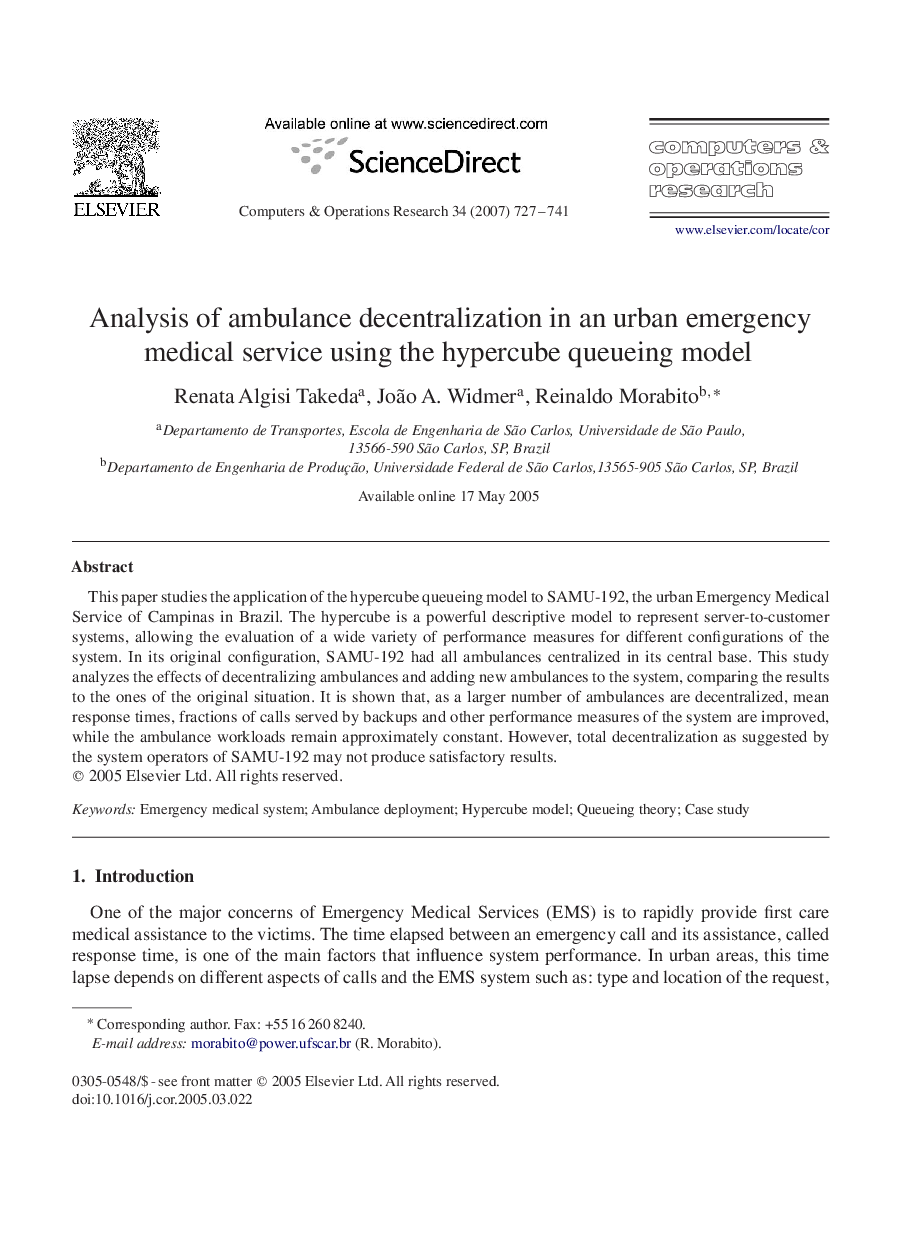| Article ID | Journal | Published Year | Pages | File Type |
|---|---|---|---|---|
| 474899 | Computers & Operations Research | 2007 | 15 Pages |
This paper studies the application of the hypercube queueing model to SAMU-192, the urban Emergency Medical Service of Campinas in Brazil. The hypercube is a powerful descriptive model to represent server-to-customer systems, allowing the evaluation of a wide variety of performance measures for different configurations of the system. In its original configuration, SAMU-192 had all ambulances centralized in its central base. This study analyzes the effects of decentralizing ambulances and adding new ambulances to the system, comparing the results to the ones of the original situation. It is shown that, as a larger number of ambulances are decentralized, mean response times, fractions of calls served by backups and other performance measures of the system are improved, while the ambulance workloads remain approximately constant. However, total decentralization as suggested by the system operators of SAMU-192 may not produce satisfactory results.
